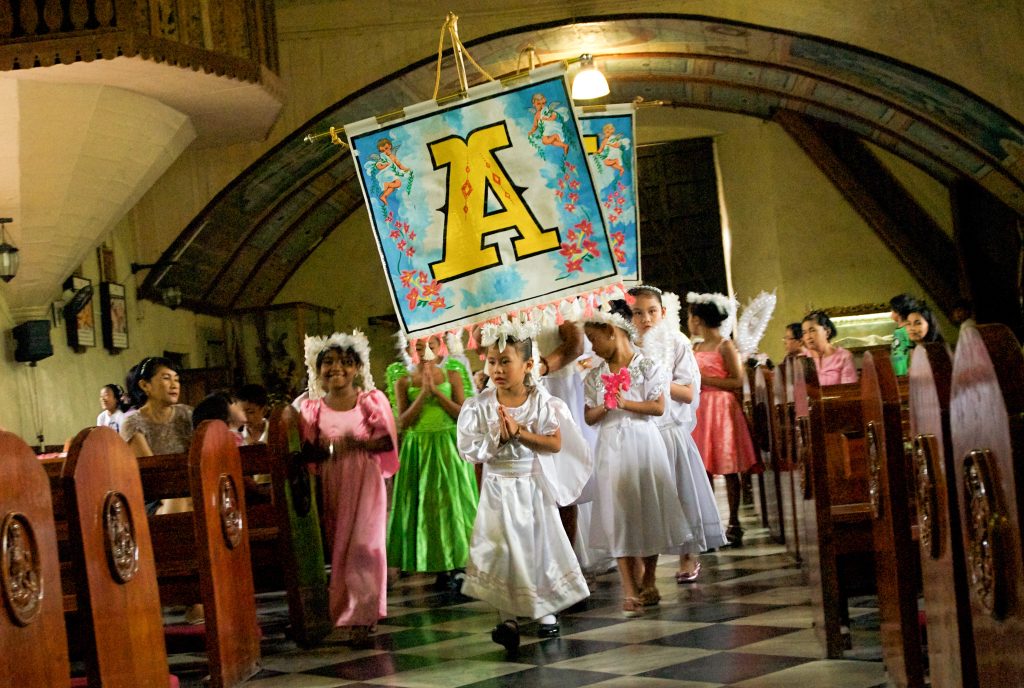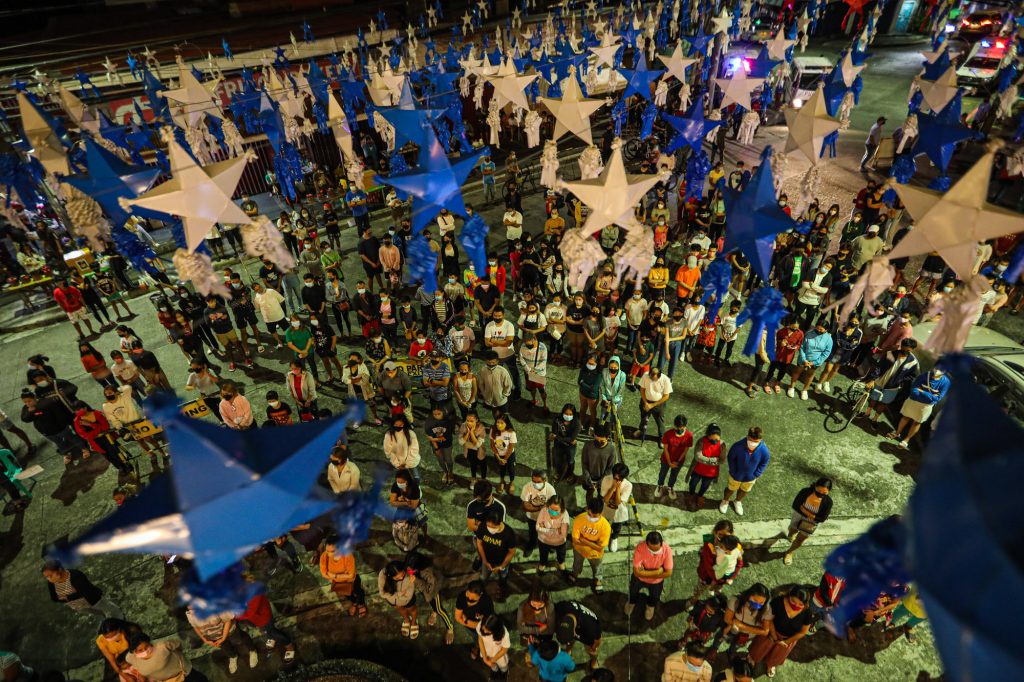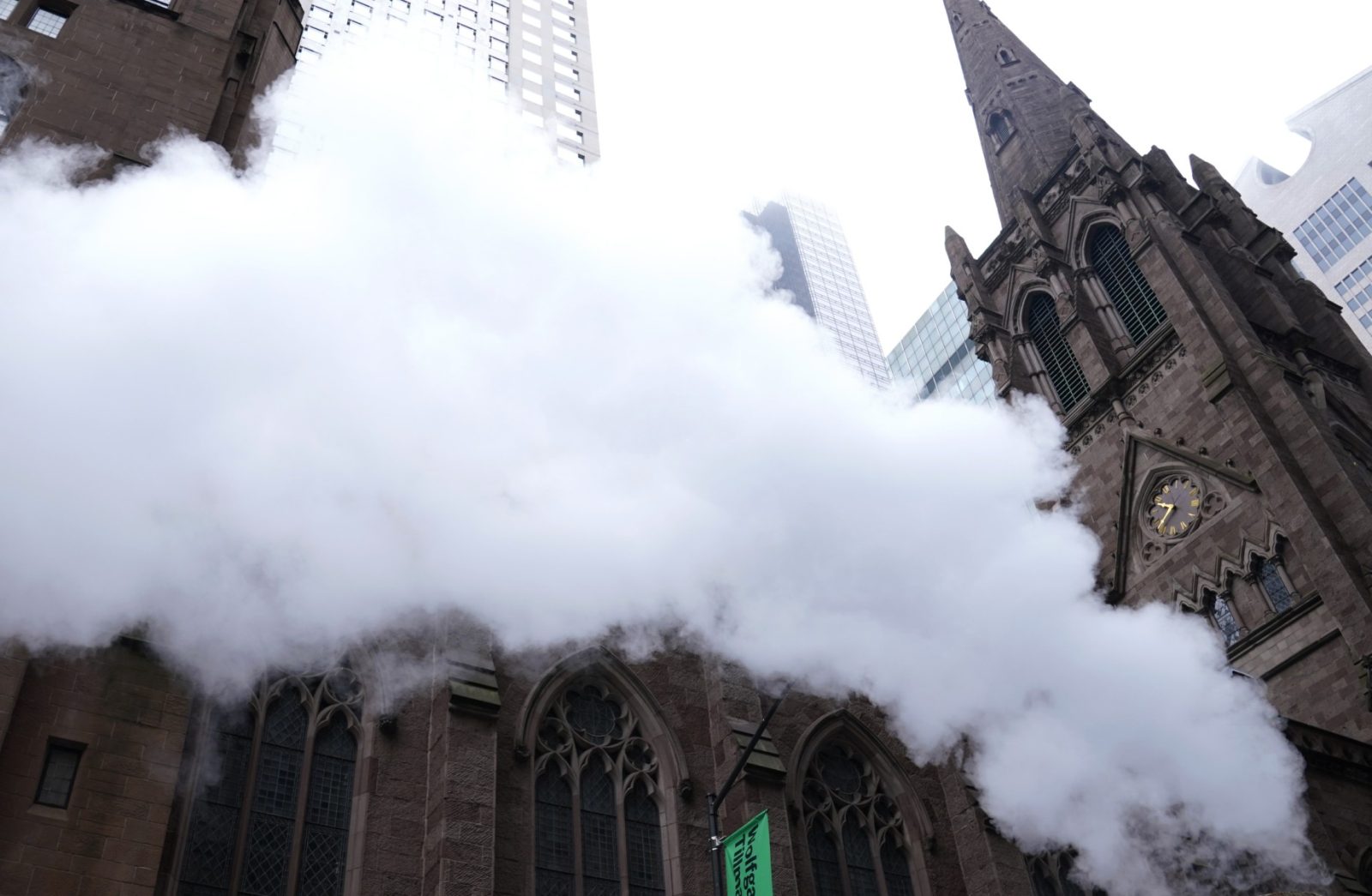Have the gods left the city? Have they come back with a vengeance? Where can we find them now?
Popular imagination has ambivalent notions of the divine presence in urban and cosmopolitan contexts. On the one hand, we have metaphorical “sin cities” deserving of God’s wrath and punishment. On the other hand, all religions vigorously flourished in the world’s main cities. Where shall we locate religion in our present globalized cities? Does it serve the well-being of peoples for which it is intended?
The retreat of religions
Secularization theories have a view of religion that fades at the onset of modern rationality. As modernity advances, it argues, religion retreats from the social milieu. In the words of C. Wright Mills, religion will “disappear altogether except, possibly, in the private realms.” The modern “iron cage of reason” is supposed to drive away the religious, relegating it to one sphere of life – the private – rather than as one all-pervading narrative.
What Max Weber calls the “disenchantment of the world” is parallel to what contemporary sociologists like Peter Berger’s withdrawal of the “sacred canopy” where “all of social life receives ultimate meaning binding on everybody.”
Thus, the local and the rural overflows with religion while the cosmopolitan and the urban is bereft of it. Though Berger recants this secularist tune at a later time, its remnants still persist in the “spiritual but not religious” (SBNR) or “believing but not belonging” discourses in contemporary sociological analyses. What disappears is public religion but not private spirituality.
This secularist narrative of religion can be read hand in hand with its evolutionary cousins. Robert Bellah’s “Religion and Human Evolution” theorizes that religions evolve from the tribal, to archaic and to the axial ages; from ritual to mythical to theoretical. The evolutionary logic is not a new narrative: Karl Jaspers already periodized history into four stages, e.g., Promethan, ancient, axial and modern histories; or August Comte divided sociology into three progressive states, e.g., theological, metaphysical and scientific. This is the point I want to establish: if we push the evolutionary logic to its limits, religions will soon disappear, hide in some private realms of social consciousness, evacuated as it is by the scientific technological paradigm in the present cosmopolitan and global city.
But there is another competing narrative worth recounting.

Religion in the city
Religions and cities in fact are never strangers to one another. Religions created cities around them; and urban locations become a fertile network for the flourishing of religious beliefs. In the first millennium BCE, for instance, Buddhist and Jain monasteries started in the outskirts of cities like Taxila or Varanasi in India; and as the temples became popular, great cities thrived around them.
Or, in other cases, urban mobility takes over older religious sites and transform them into cities like, for example, Delhi which was once the location of ancient Sufi shrines or Punjab which was built over a famous center of Sikh religion.
The first cities that emerged in Mesopotamia around 3200 BCE were also organized around temples. Religion provided cohesion and control among the population, thus, explaining the intricate relationship between the notion of “god” and “king” in the city as the center of power.
Though the Christian movement started in small villages around Palestine, its spread was facilitated by the system of urban centers across the Roman Empire – Jerusalem, Antioch, Corinth, Alexandria, Ephesus, Damascus, Edessa, Carthage and others.
The historian Rodney Stark writes: “Of the twenty-two largest cities in the empire, four probably still lacked a Christian church by the year 200.” The intersection of cultures in these cities made possible the spread of Christianity to the urban areas of China or India in the first millennium of the Christian era.
In short, the city and cosmopolitan urban centers are not inimical to religions as the secularization theories want us to believe. Religions have thrived on its landscapes transforming it within its worldview at the same time being transformed by their divergent practices of politics and commerce.
If these examples are too ancient and archaic, thus, could have been already superseded by modern technological developments, some contemporary locations can help clarify.
Robert Orsi’s collection of essays on New York and other US cities tells us that the urban landscape does not only provide a backdrop – now more cosmopolitan and postmodern – of the religions therein. It also shapes these religions and their practices. The study on Haitian Vodou tells of dislocation of the immigrants from Haiti but also of the discovery of a new sacred spaces in the bustling alleys of New York. The same observation is made of the Cuban Catholic shrine of our Lady of Charity in Miami or a Hindu temple in Washington, DC.
I may add – from personal experience working among Filipinos in these places – the “Santakrusan” in Manhattan or “Simbang Gabi” in all main Catholic churches in any US city. Religions have not retreated to some private realm. These celebrations are public and it is there for all to see and participate.
“Santakrusan” is a public spectacle in the winding route around downtown Manhattan’s Fifth Avenue where a medieval-clad Reyna Elena (Queen Helena) and her small boy, Constantine, majestically walks along with her royal court composed of other lower “queens,” “princesses,” and their escorts under arches adorned with flowers.
“Simbang Gabi” is a series of early dawn Masses nine days before Christmas attended not only by Filipinos but also their friends from different countries. Food is served in parish halls to the delight of non-Filipino guests.
Attending in any of these celebrations shows the sacralization of the city as it encounters these religions and the urbanization of these otherwise traditional religious practices and it navigates in the plural cityscapes.

European exceptionalism
Some thinkers declare this contemporary revival of religions as the “resurgence of religion” in the city, the “re-enchantment of the world.” “God is back,” some writers proclaim. But has God left in the first place? This assertion still harks back to the secularization theories which sidelined the God-discourse at the coming of modernity and returned at its wake in postmodern times. This might be true of the European experience. But such a model does not hold water for the rest of world.
The sociologist José Casanova rightly observes that “as the rest of the world modernizes, people are not becoming more secular like us, but are becoming more religious – or, actually, they are becoming simultaneously both more secular and more religious, which of course only confuses our binary categories. But once it becomes obvious that the secularization of Europe is, comparatively speaking, rather exceptional, the old theory that explained Europe’s secularity in terms of its modernity is no longer plausible.”
The European experience only appears to be a local and singular phenomenon, thus, not universal. Western secularization theories in fact continuously fail to explain Asian, African, Pacific or Latin American worlds which endlessly bursts with multi-religious fervor and practices regardless of their location in the so-called Western categories of pre-modern, modern and post-modern phases.
In these non-Western contexts, immersed as they are in pluralist and multi-religious universes, what the West calls a “resurgence” or “revival” of spirituality and religions in postmodernity is in fact the usual state of affairs.
There is nothing new to this phenomenon. It has always been this way ever since.
Full article is found in D. F. Pilario, “Faith and Religion in Globalized Megacities: A View from Manila.” The City and Global Development. Beyond North-South Paradigm. Eds. Linda Hogan, Alina Kreuse and Markus Bucker. London: SCM Press, 2019, Concilium 2019. No. 1, 73-84.







